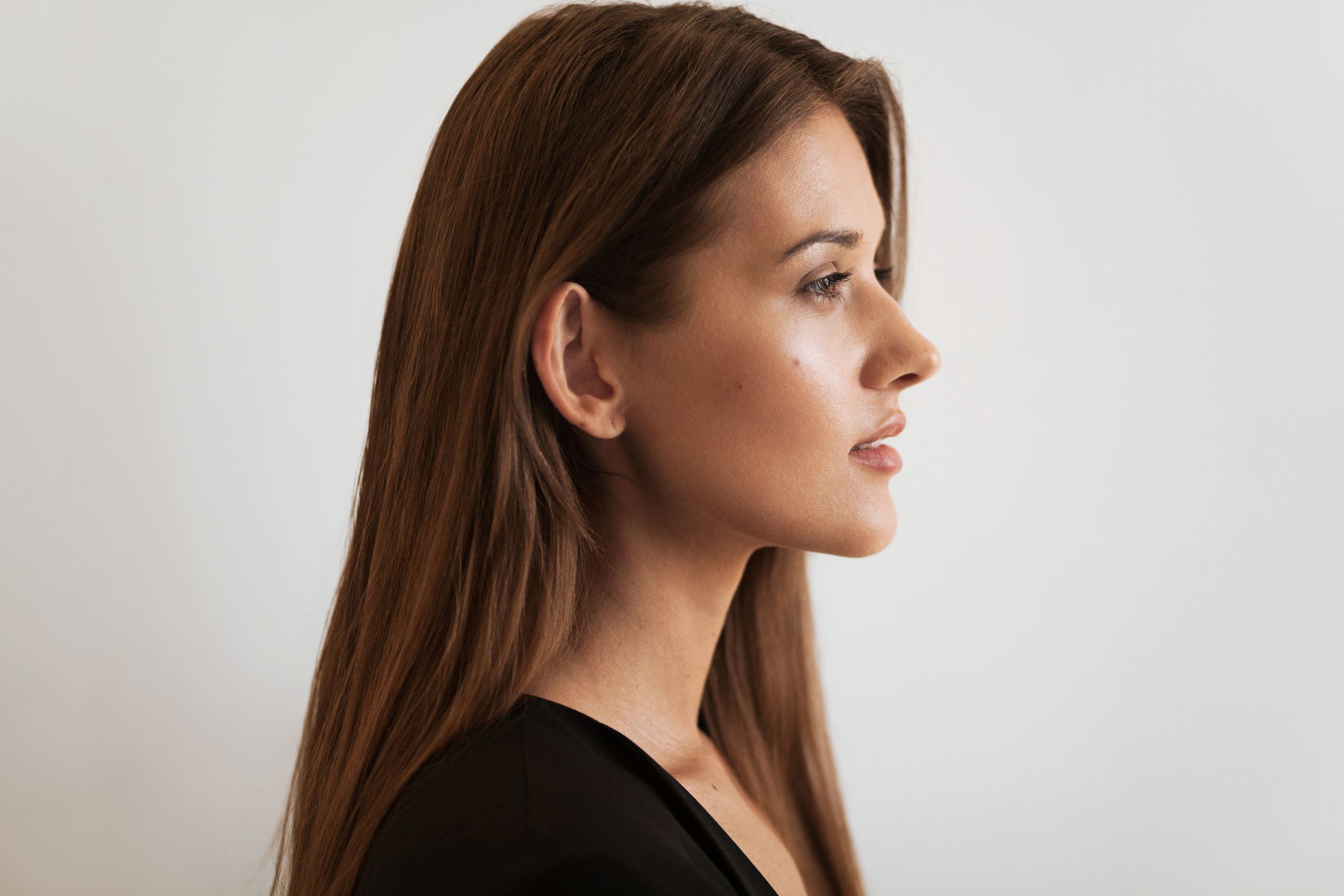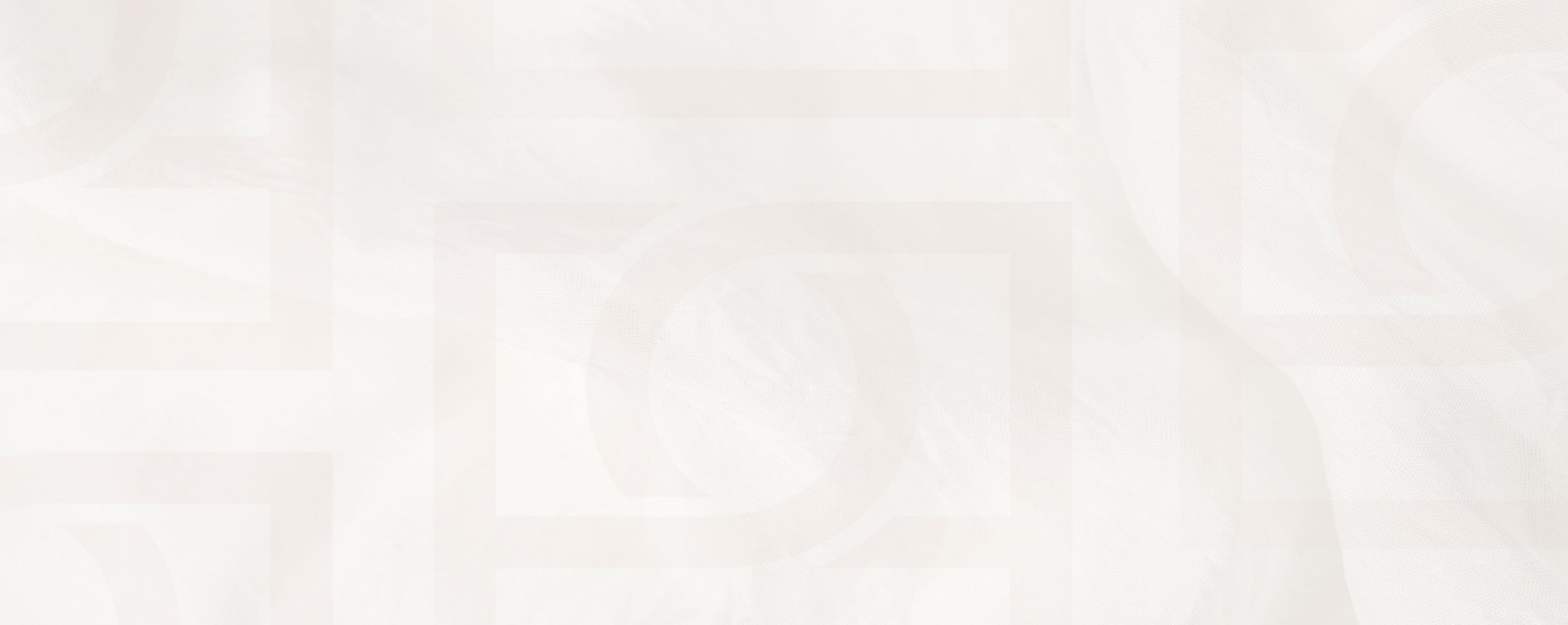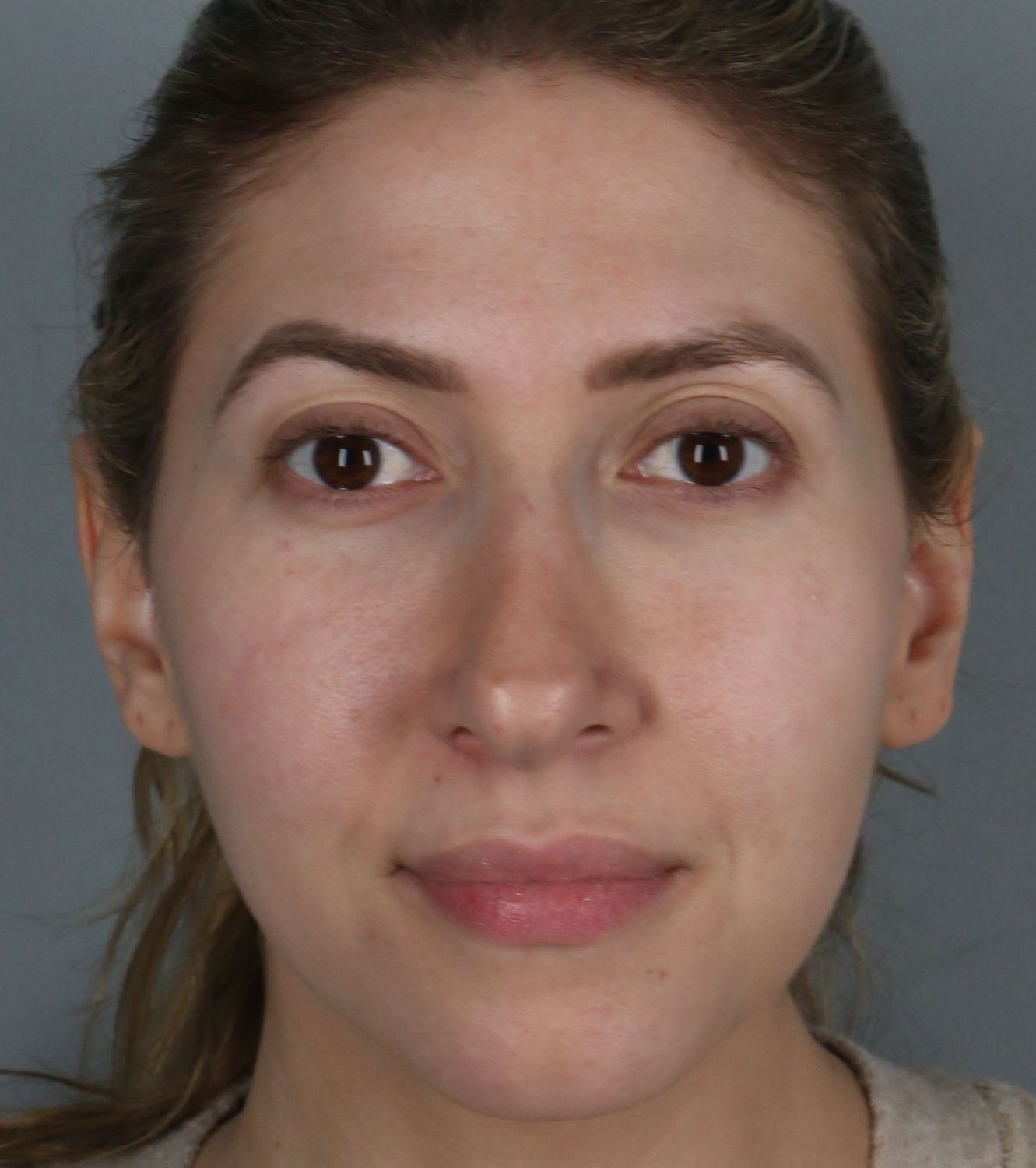
Rhinoplasty
in Beverly Hills, CA
The Practice Plastic Surgery in Beverly Hills, California, stands out as a premier destination for rhinoplasty surgery. Our team of specialists brings unparalleled expertise to this transformative procedure.
Renowned for their artistic vision and meticulous attention to detail, our facial plastic surgeons craft personalized solutions to achieve natural-looking results to enhance facial harmony. Above all else, our goal is to keep your inherent nasal structure in tact, ensuring you always remain "you". You're unique, and we think your nose should be, too.
- Enhanced facial balance and profile
- Improved aesthetics: address size, shape, or asymmetry
- Potential improvement in breathing function
- Minimally invasive outpatient procedure
- Natural-looking, personalized results

1 of 8
Rhinoplasty Before & Afters
Rhinoplasty can address various concerns, including balance and profile irregularities, size or shape issues, and breathing difficulties. Examining your nose, both externally and internally, is crucial for crafting a safe and effective treatment plan that addresses both cosmetic and functional aspects.
To further enhance the planning process and communication, we utilize Vectra 3D imaging technology. This innovative system allows our surgeons to manipulate a three-dimensional image of your face, simulating potential changes to your nose and visualizing how they would impact your overall facial aesthetics.

Nose reshaping is a detailed process, considering the patient's anatomy, breathing concerns, and aesthetic goals. Our approach involves refining nasal bones and tips, removing humps, and sculpting cartilage for a harmonious look. For those desiring a higher bridge, cartilage grafts from the ear or rib can be added.
Open Rhinoplasty
During open rhinoplasty, a precise incision is made at the base of the columella, providing direct access to the cartilage for refined results. Specializing in cartilage grafting and meticulous tissue removal, our surgeon tailors each procedure to reshape nasal structures and enhance symmetry. Ideal for correcting a deviated septum, improving breathing, addressing larger areas like the nasal bridge, and for revision procedures.
Closed Rhinoplasty
Closed rhinoplasty, or "scarless rhinoplasty," involves no external incisions; instead, all adjustments are made inside the nostrils. Suitable for minor tip refinement and bone changes, this less invasive approach may allow for local anesthesia and quicker recovery times.
Revision Rhinoplasty
Patients dissatisfied with the outcomes of previous rhinoplasty surgeries may seek revision rhinoplasty to address both cosmetic and functional concerns. Whether due to aesthetic dissatisfaction or unresolved breathing issues, revision rhinoplasty offers a tailored solution to refine and improve the results of prior procedures, restoring confidence and satisfaction.
Ethnic Rhinoplasty
Ethnic rhinoplasty enhances the nose while preserving its ethnic qualities. By making subtle changes to improve function and aesthetics, like reducing bumps or refining the tip, ethnic rhinoplasty allows you to refine your appearance without creating a "generic" or inauthentic look.
Rhinoplasty is typically performed on an outpatient basis under general anesthesia. Prior to surgery, you'll have a final consultation with your surgeon to review your personalized surgical plan and address any questions you may have.
Tailored Techniques:
The surgical approach depends on your specific needs and goals. The two main techniques are:
- Open Rhinoplasty: A small incision is made on the columella, the strip of tissue between your nostrils. This allows for direct visualization of the underlying structures, enabling precise adjustments for complex cases like a deviated septum or significant bridge work.
- Closed Rhinoplasty: Also known as "scarless," this method utilizes incisions hidden within the nostrils. It's suitable for minor tip refinements or bone adjustments and often offers a quicker recovery.
During either technique, your surgeon will meticulously reshape the nasal bones and cartilage to achieve your desired outcome. This may involve removing or repositioning cartilage or bone to create a more balanced and aesthetically pleasing appearance. Once complete, the incisions are carefully sutured closed.
Understanding these approaches will help you feel confident about discussing your goals and choosing the right technique for your rhinoplasty journey.
Rhinoplasty offers a multifaceted solution for a variety of concerns related to the nose. Common conditions it addresses include:
Aesthetics
- Size and Shape: Rhinoplasty can reshape the nose to achieve a more balanced and proportional look, addressing concerns like a large nose, a wide bridge, or a bulbous tip.
- Asymmetry: The procedure can correct asymmetry, creating a more symmetrical and aesthetically pleasing nose.
- Hump Removal: It can remove humps or bumps on the bridge of the nose for a smoother profile.
Breathing Difficulties
- Deviated Septum: Rhinoplasty can address a deviated septum or a misaligned wall separating the nostrils, significantly improving breathing function. This is known as a septoplasty.
- Narrowed Nostrils: It can correct narrowed nostrils that impede airflow.

Enhanced Facial Balance
What are the benefits of Rhinoplasty?
Rhinoplasty offers a range of potential benefits that extend beyond simply altering the appearance of your nose. Here's a breakdown of some key advantages to consider:
Enhanced Facial Harmony and Confidence
A well-proportioned nose plays a significant role in facial balance. Rhinoplasty can refine your nose's size, shape, or asymmetry, creating a more balanced and aesthetically pleasing look. This newfound harmony can significantly boost your confidence and self-esteem, allowing you to project your best self to the world.
Improved Breathing Function
Rhinoplasty isn't just about aesthetics; it can also address functional concerns. For individuals with a deviated septum or narrowed nostrils, breathing difficulties can be a constant source of discomfort and impede daily activities. Rhinoplasty can correct these structural issues, allowing you to breathe more easily and improve your overall well-being.
Natural-Looking Results
Gone are the days of the “obvious nosejob” nose. Modern rhinoplasty techniques prioritize achieving natural-looking results that complement your unique facial features. Our surgeons meticulously sculpt the nose to create a refined yet harmonious appearance that blends seamlessly with your existing bone structure.
Long-lasting Transformation
Rhinoplasty is a long-lasting procedure. While some swelling and bruising are expected in the initial healing period, the final rhinoplasty results are typically permanent. This allows you to enjoy the benefits of your enhanced facial aesthetics and improved breathing function for years to come.
Rhinoplasty may be a good option for you if:
- You're in good overall health with no underlying medical conditions that could complicate healing.
- You've completed facial growth (typically around age 16-18).
- You have realistic expectations about the outcome and understand it's a personalized procedure for facial harmony, not simply creating a specific look.
- You're bothered by the size, shape, asymmetry, or breathing difficulties related to your nose.
Hold off on rhinoplasty if:
- You're a smoker, as smoking can hinder healing and increase complication risks.
- You have unrealistic expectations about the results.
- You have uncontrolled health conditions.
The best way to determine candidacy is to schedule a consultation with a board-certified plastic surgeon. They can assess your anatomy, medical history, and aesthetic goals to determine if rhinoplasty is right for you.

Rhinoplasty is typically an outpatient procedure, allowing you to return home the same day. While healing varies, most patients experience one week of initial downtime. Here's a general timeline:
- Week One: You'll wear a cast to protect your nose during healing. This is removed after seven days, along with any sutures from open rhinoplasty. Bruising and swelling are common but gradually subside.
- Four-Six Weeks: Most bruising and swelling disappear within this timeframe.
- Up to One Year: Complete healing can take a year. During this time, your final results will continue to refine as the swelling fully resolves.
Our Team is Here to Support You:
We understand the importance of a smooth recovery. Our team will provide detailed post-operative instructions and schedule follow-up appointments to monitor your progress and address any concerns you may have.
For procedures addressing prominent concerns like a hump removal, you'll experience initial improvements relatively soon, often after your cast is removed. This allows you to appreciate the overall shape changes. When focusing on delicate refinements like a bulbous tip, the outcome may take longer to fully come into view. These adjustments, often involving millimeters of change, become most noticeable as swelling gradually subsides.
Complete healing for traditional rhinoplasty can take up to a year. During this time, swelling will progressively disappear, allowing your final, refined results to emerge. We understand your eagerness to see the final outcome, and our team is here to support you throughout the process and address any questions you may have as your new nose takes shape.
Whether bone shaping is necessary depends on your unique anatomy and desired outcome. For example, correcting a dorsal hump (bridge bump) might involve bone adjustments. Your surgeon will discuss the specifics during your consultation.
Advanced techniques often minimize the need for nasal packing. However, soft splints may be used to support the septum. In rare cases, packing might be needed overnight.
The type of rhinoplasty determines scarring. Traditional rhinoplasty uses a trans-columellar incision (between nostrils), carefully hidden in the natural skin fold. Closed rhinoplasty avoids external incisions, resulting in minimal to no visible scarring.
A skillfully performed rhinoplasty should create natural-looking results. While close acquaintances might notice a change, the goal is to achieve a balanced and aesthetically pleasing nose that complements your features, not an obviously "done" look.
Facial harmony is key. In addition to rhinoplasty, we offer procedures like ear surgery, facial implants, chin adjustments, and eyelid surgery to address various concerns. We encourage you to schedule a consultation to discuss your questions and goals in detail.

















